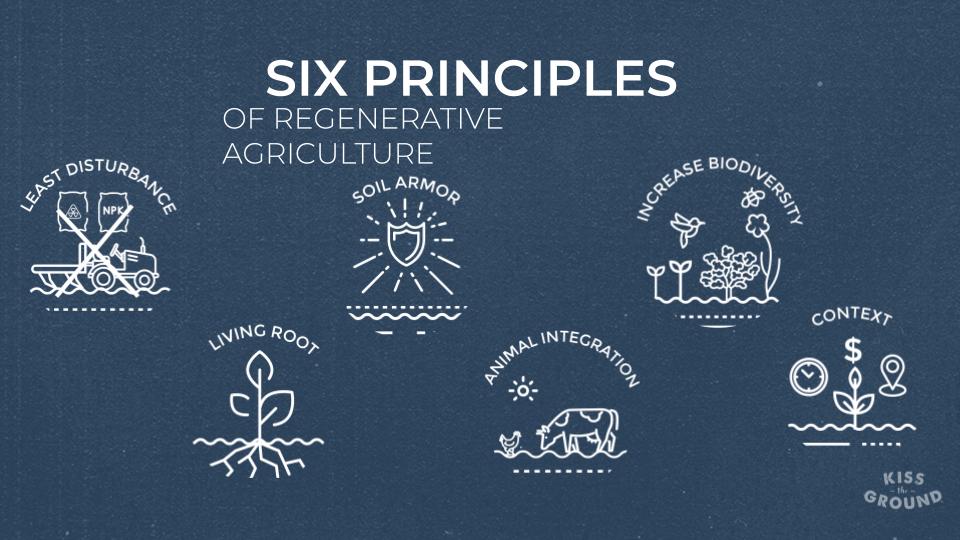Our Vision of Regeneration

Define or do not define? that is the question
There are so many definitions out there...Some are more ambitious than the others, altough they all genuinly aim at improving things.
Regeneration is a continuous improvement path, aiming at constantly balancing natural ecosystem with its sets of constant variationns and unbalances. Hence we can debate whether we should define regenerative agriculture: by defining we risk to limit the scope to a list of practices, and by not defining we also open the door to various levels of exigence, not providing the same guarantees of impact.
Our take is that the definition should be more of a vision, with an ambitious goal for outcome and a mimimum set of practices.
A holistic approach to farming focused on improving living ecosystems.
Including practices at the intersection of organic and soil conservation to actively regenerate soil health.
We also relate well to the vision advocated by Kiss the Ground, a US non profit advocating for Regenerative Agriculture:
"Regenerative agriculture takes a systems-based, holistic look at the land being stewarded and applies various principles with the goal of making the land more productive and biodiverse over time. In most situations, improving soil health and function is the key to improving productivity and biodiversity. One of the key components of healthy soil is organic matter, which is anything that is alive or was once living, such as a plant root, an earthworm, or a microbe."
And their 6 key guiding principles:
Least Disturbance: It’s important to avoid plowing the soil, and abstain from using harmful chemical amendments. These practices make it difficult for a complex soil ecosystem to thrive.
Living Roots: Keeping living roots in the ground year-round (or for as
long as possible) provides a steady source of food for organisms in the soil. In turn, soil
microorganisms help prevent soil erosion, increase water infiltration rates, and provide
plants with key nutrients.
Soil Armor: Keeping the soil covered with living plants or trampled/dead plant material reduces erosion and helps lower soil temperatures.
Increase Biodiversity: Growing a diversity of plants helps cultivate nutrient dense soil, increase soil carbon, and reduce the risk of pests and diseases.
Animal Integration: Including animals in farming systems closes the nutrient loop and reduces the need for imported fertilizers. Deciding which are the right species of animals to incorporate depends on each farm’s unique ecosystem and climate.
Context, Context, Context: No two farms are alike. From brittle environments to more
moist ones, from different crops to livestock, from no funds to extensive funds, context is key. How you will go about regenerating land will vary and depend on many key components. A holistic framework is necessary to successfully transition to regenerative.
In conclusion, we do think that a certification will be needed at some point, but won't engage into defining one ourselves, as a lot of smart people are working on designing frameworks, such as Regenerative Organic Certified in the US.